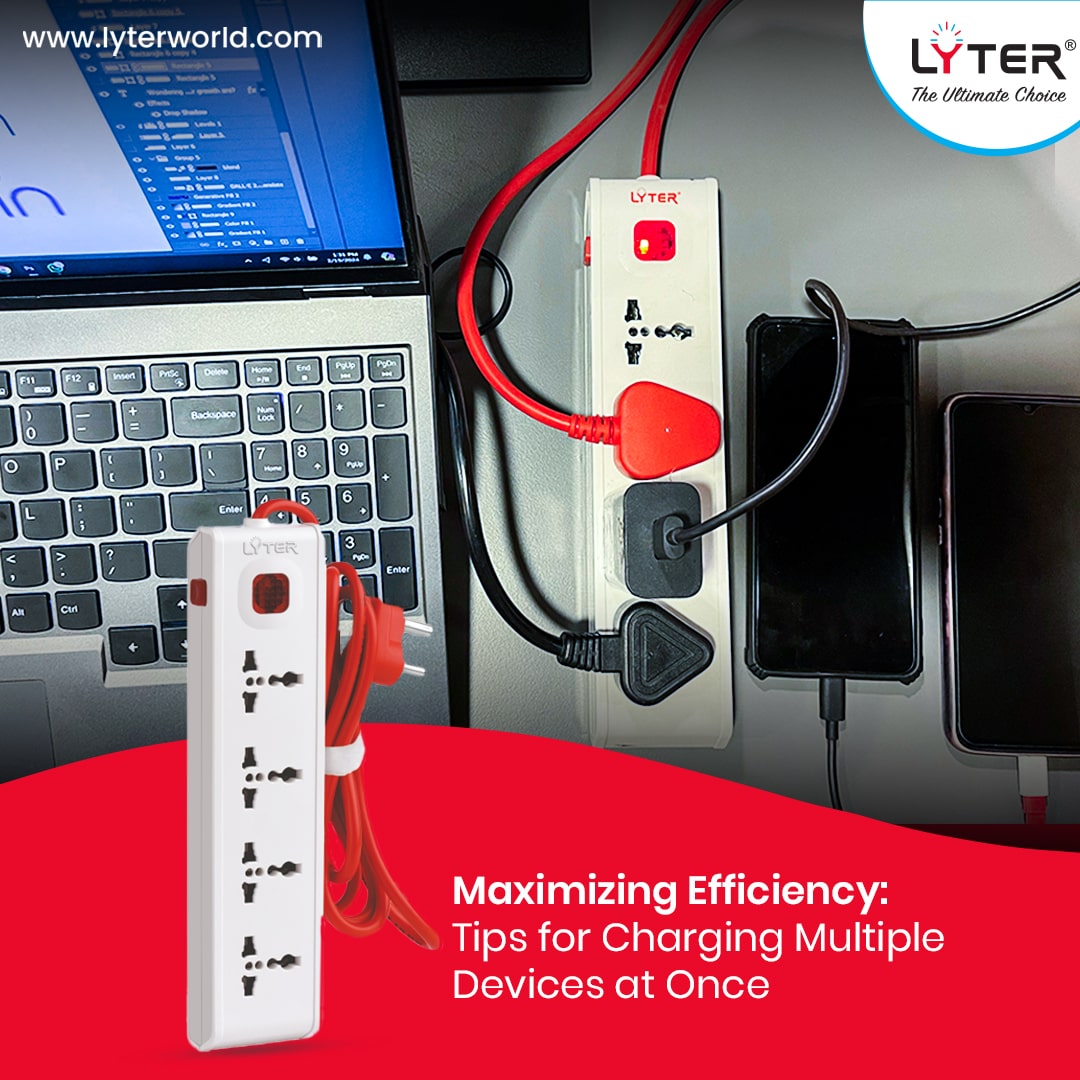Product
The Essential Guide to Calculating Electrical Load for Home Appliances
Published on 22 Jan 2024

Think of your home like a big puzzle. Just like puzzle pieces, each appliance, from your air conditioner to the fridge, fans, and even a small light bulb, fits together to make your life easier. But with that comes the fact that they use electricity, adding to what we call the 'electrical load.'
Knowing the electrical load of your house is really important. It's all about how much power all your appliances use together. Understanding this helps keep your home safe, saves money on electricity bills, and eventually becomes good for the environment. By keeping track of the electrical load, you can avoid putting too much strain on your home’s electrical system, which can prevent problems like power outages or even fires.
So, let's understand what electric load is, why calculating it helps, and what its benefits are.
What is electrical load?
Electricity load is the total quantity of electrical power consumed by all electrical equipment and appliances in a particular system, such as a home or a building. It measures the demand for electrical power and is often represented in watts (W) or kilowatts (kW).
So, to understand this better, consider each electrical device as placing a 'load' on the power source (like the electrical grid or a generator). The electrical load is the total of these separate requests. For example, if you operate a 60-watt light bulb and a 240-watt refrigerator simultaneously, the overall electrical demand will be 300 watts.
Many electrical accessory manufacturers in India focus on producing safe and energy-efficient items. This strategy reduces total electrical demand while contributing to more sustainable and environmentally friendly use of resources.
How to Calculate Electrical Load?
Calculating the load is quite a straightforward task:
- Identify the Wattage: Look at the label on each appliance to see how much power it consumes, usually given in watts. These labels are often located on the back or bottom of the appliance. So it will help you to identify the wattage.
- Calculate Total Load: Add the wattages of all appliances to determine the total load. For example, if you have a 100W TV, a 200W fridge, and a 300W washing machine, the total load would be 100W + 200W + 300W = 600W.
- Convert to Kilowatts: To make things easier, convert the total wattage to kilowatts (kW), as electricity bills are frequently calculated in kW. Simply divide the total wattage by 1000. So 600 watts becomes 0.6 kilowatts.
The formula for calculating electrical load largely considers the power ratings of any electrical appliances or equipment utilized. The basic formula is:
The electrical load estimation formula is based on the power, voltage, and current connection.
- Ampere = Watts/Volt
- Watts = Volt x Ampere
These formulae easily compute the total capacity of an electrical circuit and individual circuits.
Why is it Important to Calculate Electrical Load?
- Prevent Overloading:
Overloading happens when too many appliances consume power at once, surpassing the capacity of your electrical system. This might cause circuit breakers to trip as a precaution to prevent harm. In more catastrophic circumstances, overloading can cause electrical fires, endangering your house and safety. Understanding your electrical load allows you to avoid these hazards and keep your consumption within the safe limits of your home's electrical capability.
- Energy Efficiency:
Identifying the electric load of your appliances might assist in identifying the most energy-consuming ones. This understanding enables you to make more informed decisions regarding your appliance usage, such as reducing the use of high-consumption gadgets or replacing them with more energy-efficient ones. This lowers your electricity bill while also lowering your environmental effect.
Many electrical wholesale online India stores provide energy-efficient products, so your household's electrical load will not rise. It will improve safety while simultaneously lowering your power bill.
- Electrical System Planning:
Accurate electrical load calculation is critical for house renovations or new construction. It guides the design of the electrical system, guaranteeing that it can meet your present and future power requirements. This includes determining the size and kind of wire, the number of circuits, and, obviously, the capacity of the main service panel. Proper planning based on load calculations ensures your electric system is safe, efficient, and compliant with local electrical codes and regulations.
Benefits of Calculating Electric Load
- Safety: First and foremost, it ensures the safety of your home’s electrical system.
- Cost Savings: You may lower your power expenses by identifying and minimizing the use of high-energy equipment.
- Longevity of Appliances: Proper load control can help your appliances last longer by keeping them from running in an overwhelmed electrical system with electrical load.
- Environmental Impact: Reducing excessive energy use benefits the environment by lowering your carbon footprint.
Get Energy-Efficient Products from Lyter World
Calculating the electrical load of your home appliances is a simple yet crucial task. It's more than simply saving expenditures; it's about making your house safer and more efficient. Understanding your electric load lets you make informed decisions for a safer, greener, and energy-efficient living space.
Exploring Lyter World's product line is a wise decision for anyone, especially those aiming to create a more eco-friendly and cost-effective environment for their home. Their innovative solutions are meant to connect with current sustainability goals, offering you a pathway to lower your bills and contribute to a healthier planet. With their vast variety, you will likely find alternatives that meet your energy needs and preferences.



